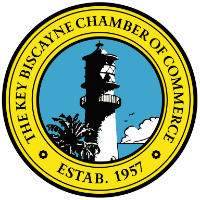
Florida is renowned for its beautiful beaches and sunny climate, making it a desirable destination for millions. However, its geographical location also makes it highly vulnerable to hurricanes. In the past decades, Florida has experienced numerous severe storms, which have significantly impacted residents and infrastructure. As a consequence, implementing hurricane-ready features, specifically in roofing systems, has become crucial for homeowners in this region.
Understanding Florida’s Hurricane-Prone Environment
The Sunshine State is no stranger to hurricanes, which have become an almost annual occurrence. Data from the National Oceanic and Atmospheric Administration (NOAA) shows an average of 1-2 hurricanes making landfall in Florida each year. With wind speeds often exceeding 150 miles per hour, these storms can wreak havoc on roofing structures.
Table: Recent Major Hurricanes in Florida
| Year | Hurricane Name | Category | Max Wind Speed (mph) | Damage (in billion USD) |
|---|---|---|---|---|
| 2017 | Irma | 5 | 185 | 77.16 |
| 2018 | Michael | 5 | 160 | 25.1 |
| 2020 | Isaias | 1 | 85 | 4.8 |
Resilience Through Design: The Need for Hurricane-Ready Roofing
A hurricane-ready roof is not just an option; it’s a necessity for preserving life and property. By using materials and techniques designed to withstand extreme weather conditions, homeowners can significantly reduce the risk of extensive damage. The Florida Building Code mandates stringent requirements to ensure all homes can endure harsh conditions – especially the roofing. Ensuring your roof adheres to these codes is vital.
Materials That Make a Difference
The choice of materials plays a critical role in a roof’s ability to withstand significant storm impacts. Metal roofing, for example, is known for its durability and resistance to high winds. Clay and concrete tiles also provide a robust defense while appealing aesthetically. Each material has its advantages:
- Metal Roofs: Known for their high wind resistance and energy efficiency.
- Concrete Tiles: Heavy, providing stability against lifting from high winds.
- Clay Tiles: Durable and fire-resistant, although slightly heavier than concrete tiles.
Cost Implications and Insurance Benefits
Initial costs for installing hurricane-ready roofs can be higher than traditional choices. However, the long-term savings in insurance premiums and potential repair costs make them a worthwhile investment. State Farm has indicated that homes equipped with storm-resistant features may get premium discounts. Furthermore, many insurers offer benefits to those adhering to the latest roofing standards.
Installation Precision: The Role of Professional Roofing Contractors
Using a skilled roofing contractor is critical when installing a hurricane-resistant roof. It’s not merely about materials—installation quality can be the difference between a roof that withstands storms and one that doesn’t. A professional contractor will ensure that the roof fasteners and sealants are applied correctly, and that the structure adheres to local building codes.
Maintenance: A Proactive Approach
Regular maintenance and inspections are equally vital. After every storm season, homeowners should check for any potential roof damages. Professional inspections are recommended, as experts can identify concealed damages that could compromise a roof’s integrity in future storms.
Homeowner Responsibilities and Preparedness
Beyond professional help, homeowners should be proactive in preparing their property. This includes:
- Regularly clearing debris from roofs and gutters.
- Trimming tree branches that could fall and damage the roof during storms.
- Conducting personal inspections to spot visible issues early.
The Future of Roofing Technology
Technological advancements continue to revolutionize the roofing industry. From impact-resistant shingles to roof monitoring systems that alert homeowners of potential issues, these innovations promise even greater security. The integration of smart technology with traditional building techniques offers an exciting frontier in hurricane-ready construction.
Community Awareness and Government Support
Florida’s government provides resources and incentives to encourage homeowners to adopt hurricane-ready measures. Community programs often include workshops and grants to support roofing upgrades. Furthermore, increased awareness among residents about the benefits of hurricane-ready materials is fostering a collective sense of preparedness.
Conclusion: Strengthening Florida’s Residential Resilience
Investing in hurricane-ready roofing is a crucial step towards safeguarding one’s home against the relentless forces of nature Florida encounters. As climate change continues to influence weather patterns, robust roofing systems become even more imperative. By opting for expert installation and regular maintenance, homeowners can ensure resilience against future storms.
For more information on hurricane-ready roofing, and to schedule a consultation with experts, visit Green Home Roofing Inc. or contact them directly for assistance.
Frequently Asked Questions
What qualifies a roof as hurricane-ready?
A hurricane-ready roof is specifically designed and built to withstand extreme weather conditions, including high winds and heavy rainfall associated with hurricanes. Typically, such roofs use materials renowned for their resilience, such as metal, concrete, or clay tiles. Furthermore, proper installation is crucial, involving the use of additional fasteners, sealants, and reinforced structures to lessen the risk of uplift. In Florida, these roofing systems must comply with the Florida Building Code, which outlines specific standards and practices to safeguard homes. Regular maintenance and inspection further ensure that the roof remains up to the challenges posed by fierce weather events.
How often should hurricane-ready roofs be inspected?
It’s recommended that hurricane-ready roofs be professionally inspected at least once a year, preferably before the hurricane season commences. Regular inspections help identify minor issues that, if left unaddressed, might escalate into significant problems during a storm. After experiencing severe weather events, it is wise to conduct additional inspections to assess any damage. Homeowners should also personally check their roofs more frequently, particularly after storms, to spot any visible damage or debris accumulation that might affect the roof’s performance.
Are there financial incentives for installing hurricane-ready roofs?
Yes, there are often financial incentives for homeowners who install hurricane-ready roofs. In Florida, installing such roofing systems may lead to significant reductions in homeowner’s insurance premiums, with insurance companies offering discounts for properties deemed less vulnerable to storm damage. Additionally, state or local government programs may offer rebates, grants, or tax incentives to encourage residents to upgrade to more resilient roofing systems. These incentives not only mitigate the upfront costs of installation but also contribute to long-term savings by reducing potential damage repair costs and insurance expenditures.
What are the most effective materials for hurricane-ready roofing?
The most effective materials for hurricane-ready roofing are those that offer superior durability, impact resistance, and the ability to withstand high winds. Metal roofing is highly favored for its strength and longevity, especially in coastal areas prone to storm surges and winds. Concrete tiles provide remarkable stability, reducing the risk of roofing materials becoming airborne during hurricanes. Additionally, clay tiles, known for their aesthetic appeal, are also effective due to their weight and resistance to fire and water. Regardless of the material chosen, proper installation and adherence to building codes are essential elements for ensuring maximum performance.
How does climate change affect the need for hurricane-ready roofing?
Climate change is impacting the frequency and intensity of hurricanes, making hurricane-ready roofing increasingly vital. As global temperatures rise, hurricanes are becoming more potent, with increased rainfall and stronger winds. This escalation poses a greater threat, increasing the likelihood of extensive roof damage. In response, the demand for robust, hurricane-ready roofing solutions has surged, highlighting the necessity for homes, especially in hurricane-prone regions like Florida, to be able to withstand these intensifying storms. By investing in resilient roofing systems, homeowners can better protect their properties against the growing challenges posed by a changing climate.
For further assistance or questions on hurricane-ready roofing, please contact Green Home Roofing Inc.




